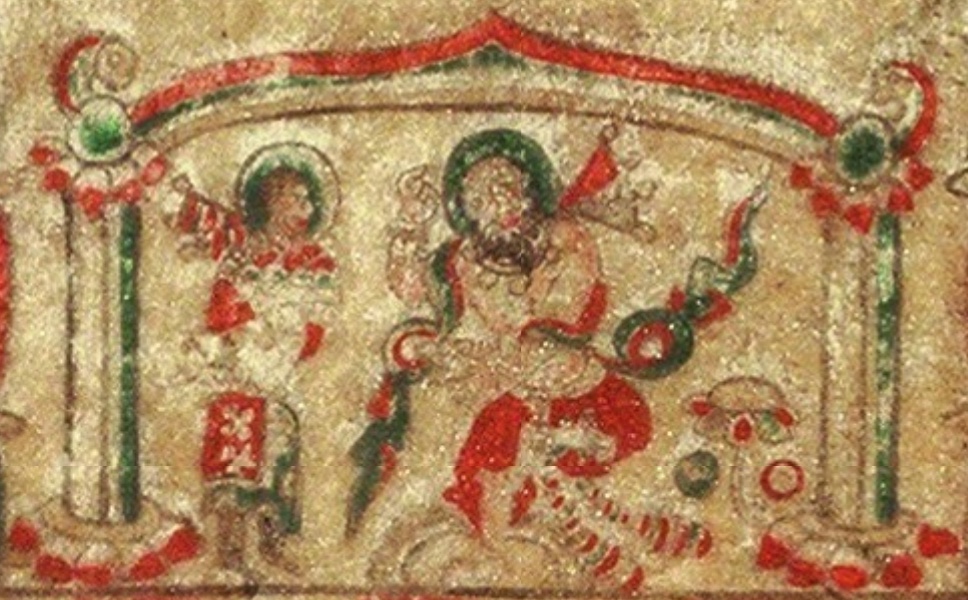The article “Influence of Iranian Music on China” was originally published in the Rhythmitica venue on July 15, 2024. Kindly note that none of the images, videos and their accompanying captions appear in the original Rythmitica posting.
===================================================================
From ancient times, there has been a close cultural connection between Iran and China through the Silk Road. The largest cultural center of the Iranian people during that period was located in eastern Iran, in a city called Kucha in Turkestan. The people of this region were connected to the northern Iranians of Sogd and eastern Ghorstan. In eastern Kucha, people spoke Chinese, while in the west, they spoke Persian. Kucha had a significant influence on Chinese music. In the year 384 CE, this land was conquered by a Chinese emperor who took its musicians with him, introducing Iranian music and instruments to China. Consequently, the Chinese court became deeply interested in foreign music, leading subsequent emperors to gather Kucha musicians. This had a profound impact on the evolution of Chinese music.
A moving performance of Homayoun Shajarian’s musical piece “Del Be Del Ze To” sung by students of the Persian language at China’s Peking University in 2024; their professor is Dr. Bahador Bagheri (Video Source: Bahador Bagheri in YouTube) [اجرای زیبای آهنگ «دل به دل ز تو»شجریان توسط دانشجویان چین، آمریکا،ایتالیاوسنگاپور در دانشگاه پکن] .The students in the class are diverse, composed of Chinese, American, Italian as well as Singaporean persons. It is notable that these students’ display a strong command of the phonetics and semantics of the Persian language song by Shajarian. The video is also of interest as it contradicts the propagandist (and Eurocentric) narratives of the so-called “Clash of Civilizations”.
In the year 581 AD, seven music groups from seven different lands, namely Kucha, Samarkand, Bukhara, Kashgar, Japan, India, and Cambodia, performed in China. In the early seventh century, two more groups were added by one of the emperors, increasing the total to nine. Due to the performance of court music by foreigners, this type of music was called “Barbari” (meaning foreign) until the late ninth century.

A painted panel of the Zoroastrian Yü Hung Sarcophagus during the Sui dynasty (dated to 592 CE or the late 6th century CE), currently housed at the Shanxi Museum. This painting clearly illustrates two figures of Iranian origin (Persian or Soghdian) attired in Sassanian dress and headdresses while playing the Pipa (a type of Persian Barbat stringed instrument) and drinking wine (Image Source: Public Domain).
In 714 CE, a school was established by Huang Tsung to train singers, dancers, and other entertainers for the court. This school differed from previous ones as it valued innovation, creativity, and the people’s preferences, not just traditional forms. It expanded to have over 11,409 students. In Tsung’s court, there were six standing orchestras, eight seated orchestras in the palace, and one large group of 1,300 musicians performing outdoors.
The 13th and 14th centuries were the era of Mongol rule over China. Hence, the music of this period was named Yuan Chu (Mongolian Dynasty Music). Music and theater flourished during this period, with the emergence of the first real Chinese opera, divided into northern and southern styles.

A second perspective of the painted panel of the Zoroastrian Yü Hung Sarcophagus (dated to 592 CE or the late 6th century CE): At right is a bearded man is performing a dance known as the “Barbarian leap (Huteng); the left figure illustrates a man with a plate filled with fruits; interestingly both of these figures feature halos (Image Source: Public Domain).
Eventually, the Chinese overcame the Mongols, and the Ming dynasty (1368-1466) came to power. Numerous songs and melodies from this era, composed for the zither, have survived. These songs are of two types:
- Hisaio-Chiou: Features shorter sounds, where the singer recites poems accompanied by an instrument.
- Ta-Chiou: Only involves instruments and covers longer sections of the piece with a high level of musical organization.
Although the Ming period was an era of opera growth and prosperity, it marked the decline of religious and court music. In the 16th century, with the arrival of European representatives, music moved out of royal patronage, and European instruments like the harpsichord and violin were introduced. By the 19th century, a dynamic and popular transformation resembling classical northern traditions emerged. This transformation led to the creation of operas known as “Ching Hsi,” famous as “Capital Plays,” which are now considered the most famous pre-republic Chinese operas.
Haniya, Tajik singer from China, performing a traditional Persian song from Seistan-Baluchistan in southeast Iran, with the orchestra performing with a blend of classical and contemporary instruments (Video Source: Tajik Patriot in YouTube).
In the 19th century, the widespread adoption of Western music made Chinese intellectuals aware of the shortcomings of their royal music and recognize the scientific values of Western music, incorporating them to enhance their own. Since then, three schools of music have emerged in China:
- Scientific and International Chinese Music School: Influenced by European music and established by Dr. Hisaio-Yiu Mei (1884-1940), who led the Shanghai National Conservatory and studied at the Leipzig Conservatory.
- Chinese National Music: This style combines Chinese musical scales with Western instruments.
- Ancient Chinese Music: This school involves principles and rules of Chinese music with ancient Chinese instruments, leading to new techniques in national music.



